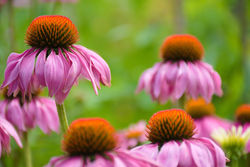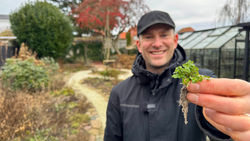Winter sowing in an unheated greenhouse
- Lars Wildes
- Jan 18, 2024
- 2 min read
As winter tightens its grip here in Denmark, the notion of sowing seeds might seem far-fetched.
However, with the ingenious technique of winter sowing, your garden can get a head start even in the coldest months. And save you time in the spring when gardening jobs are a plenty!
In this comprehensive video guide, we'll explore the ins and outs of winter sowing in an unheated greenhouse. Discover how to harness the power of the winter chill to kickstart your garden and enjoy a vibrant spring. From essential tools to seed selection and step-by-step instructions, this guide covers it all.
Why winter sowing works
Winter sowing may sound unconventional, but it aligns with the natural instincts of seeds.
When exposed to the cold, seeds receive a signal that primes them for optimal germination when warmer days arrive. This unique gardening method not only defies winter's challenges but also fosters resilient plants ready to thrive in the upcoming growing season.
Essentials for winter sowing in an unheated greenhouse
To embark on a successful winter sowing journey, gather the following essentials:
Seeds: Opt for cold-tolerant varieties suited for winter conditions. Most perennials and frost-tolerant annuals are perfect for winter sowing.
Soil: Choose a well-draining mix suitable for seed germination. We use regular potting soil (the cheap kind), not seed-starting soil.
Trays or Containers: Provide a controlled environment for your seeds.
Labels: Keep track of your seed varieties and planting dates.
Unheated Greenhouse: Create a protective space for your seeds to weather the winter.
Choosing the right seeds
Selecting seeds adapted to colder temperatures is paramount. Look for varieties known for their resilience to winter conditions.
Popular choices include cold-hardy flowers like astrantia, cosmos, lupines, pansies, calendula, and snapdragons, as well as robust vegetables such as kale, spinach, and winter lettuce. This strategic seed selection ensures a successful winter sowing experience.
Preparing the soil
The foundation of winter sowing success lies in the soil. Choose a high-quality seed starting mix enriched with nutrients or normal potting soil.
Prioritize soil with good drainage to prevent waterlogging. Moisture is crucial for germination, so ensure your soil is adequately watered before sowing.
Step-by-step instructions for winter sowing
Prepare Your Workspace: Clean trays or containers to prevent disease.
Fill Trays with Soil: Fill each container with the prepared seed starting mix, leaving some space at the top.
Sow Seeds: Follow seed packet instructions for proper depth and spacing.
Label and Water: Label trays with seed varieties and water gently, ensuring even moisture.
Cover and Ventilate: Use clear plastic lids or covers to create a mini greenhouse effect. Ventilate periodically to prevent mold and encourage air circulation.
Place in the Greenhouse: Position trays in your unheated greenhouse, ensuring they receive adequate sunlight.
Monitor and Transplant: Keep an eye on moisture levels, and once seeds sprout, transplant them into larger containers or directly into your garden when the weather permits.
Winter sowing in an unheated greenhouse is not only feasible but advantageous for a thriving spring garden.
By understanding the principles of winter sowing, selecting the right seeds, and providing optimal growing conditions, you'll unlock the potential of your garden even in the chilliest season. Armed with this comprehensive guide, embrace the magic of winter sowing and watch your garden flourish come springtime.









Comentários